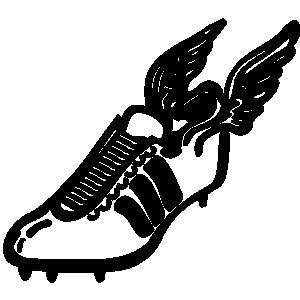Tempo Runs
During a tempo run, you run at a speed 15 to 30 seconds slower than your race pace and at roughly eight out of 10 on the exertion scale (OR AS COACH INDICATES). Tempo runs are considered hard runs, but not so difficult that you feel completely exhausted afterward. Tempo runs increase metabolic fitness, and their higher intensities build lactic acid thresholds, meaning that when race day comes, you won’t fatigue as quickly.
Intervals
Intervals are characterized by bursts of high-intensity running followed by short stretches of recovery. Perform them on a track, trail or hill. (Most of our interval drills are performed on the track.)The goal is to increase your speed and quickness. Intervals also move your muscles through their full range of motion, improving their elasticity and coordination and increasing your stride efficiency. Example: run 400 meters, follow it immediately by jogging 400 meters, and repeat the sequence eight to 12 times.
Fartleks
The most fun of all run names, “fartleks“—the Swedish term for “speed play”—are similar to intervals in that they vary between intense and moderate effort, but they do so in an unstructured manner. Fartleks are usually run on roads or trails. Essentially, you run hard for a time or distance that seems appropriate (perhaps you pick a tree up ahead, and race your teammates to it), followed by a short recovery. Fartlek runs are great for simulating races, because they force you to increase your speed unexpectedly, as you do when passing an opponent. They train your body to recruit more muscle fibers even when you are fatigued. Example: run hard for four minutes, jog for four minutes without stopping, and repeat the sequence five times.
Progressive Runs
A progressive run is a long run that builds endurance. It is characterized by running an out-and-back route on a trail or road. During the “out” portion, you go at an easy to moderate pace. After the turnaround, you increase your speed gradually throughout the “back” portion. Ideally, you run each successive mile slightly faster than the last. Progressive runs teach you to slowly pick off opponents during a race. Example: run 4 miles out at a steady pace, turn and come back, increasing your speed by 10 percent each mile.
Recovery (“Easy”) Runs /Warmdown
During recovery runs, you maintain a steady, easy pace. You could carry on a conversation during the entire run. They may seem slow and not challenging, but recovery runs might be the most important of all cross country workouts, because they allow your muscles to repair and rebuild. Recovery runs prevent the buildup of lactic acid and keep your muscles from becoming tight and stiff. They also reduce delayed onset muscle soreness (DOMS), allowing you to come back strong for your next workout or race.
5 Minute Planks
Summer Training: Core Training Planks – everyone please read













